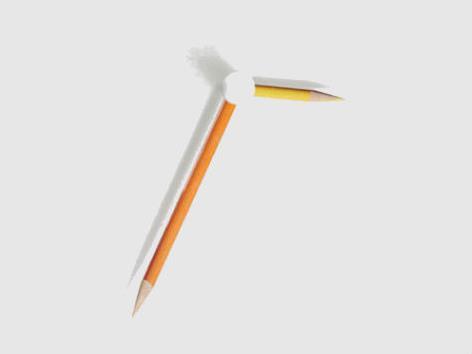Bombi Kim, Meaning of Time
Creative types often resent the regular grind of a job and plenty of aspiring artists believe they would be more creatively productive if they were free to go with the flow.
But recent investigations suggest a strict routine may help your creativity – as long as it includes a designated time for creative work. Structuring your day and creating routines to signal it is creative time can help open your creative mind.
US writer Mason Currey began delving into the routines of great artists, writers and composers when he became determined to get some creative runs on the board while working as a magazine editor. What rituals and routines had facilitated other people’s creative achievements? Did procrastination ever raise its head amongst those who became renowned for their creativity?The results of his investigation became first a blog and now a book, Daily Rituals, containing insights into the routines that 161 artists, scientists and mathematicians used to facilitate creative thinking and productivity.
Igor Stravinsky, for instance, had to be sure that no-one could hear him before he could compose and if he became blocked he liked to stand on his head.
Anthony Trollope who wrote more than 24 books, stuck to a strict routine of writing 3000 words each morning before going to work at the postal service.
In studying the routines of the greats what did Currey learn about how they can assist the creative process? ‘For starters, sticking to an established daily routine guarantees that you will make some time for your art every day,’ he says.
‘Many people assume that artists work in bursts of inspiration, but I found that that’s rarely the case. As the painter Chuck Close likes to say: ‘Inspiration is for amateurs. The rest of us just show up and get to work.’
The other benefit Currey identified is that a routine trains your mind to get into a ‘certain creative mood or mindset at the same time each day’, which eliminates a measure of uncertainty from the process. ‘As John Updike once said, a solid routine can ‘save you from giving up’.’
Some people use the same methods for channelling their creativity for years, but sometimes a routine benefits from an overhaul.
‘I think people have to think of their daily routine as a tool. We all have different sets of obstacles and obligations in our daily lives, not to mention different temperaments and working preference,’ says Currey.
Finding the routines that work for you will depend on your other obligations including your day job, your family circumstances and your sleep cycle.
Noëlle Janaczewska’s work spans plays, performance texts, lyrics and libretti, essays and radio scripts and includes the likes of Third Person, Cloud Cover and Eyewitness Blues. To maintain her prolific output she prefers to make the most of the morning hours. ‘I’m an early riser and a morning writer, not a night owl. I walk, most days, to have a flat white at one of the local cafes and often listen to jazz when I’m writing – its fugitive, elliptical forms bring new, non-linear shapes to mind,’ she says.
Her recipe for priming the creative pump is obviously working. Last month she was one of eight authors around the world awarded a Windham Campbell literature prize. The honour, which is decided by a prize jury from nominations assembled with the help of Yale University, brings with it $150,000 in prize money.
Sometimes necessity is the mother of re-invention as award-winning playwright Vanessa Bates points out on the NSW Writers’ Centre website, when asked about her routine: ‘Ok, look, there was a time when I would have bagged on about my special cup and the special coffee and the special pen and notebook and maybe the delightful outdoor table at the delightful café and something about the special way the sunlight plays on the leaves but now I have a child and so my special routine is called Take Him To School And Leave Him For A Few Hours And Write Quickly Because You Are About To Miss A Deadline.’
The question to ask in redrafting a routine: ‘How can you arrange your schedule so that you’re carving out time for your most important work – creative or otherwise – every day, at a time when you can actually focus and make progress on it? That may mean getting up early or staying up late or taking a precisely-timed afternoon nap. My book is basically a compendium of the many different tactics and strategies that great artists have employed in this battle to ‘discipline time,’ as W.H. Auden put it.’
Currey’s own routine? ‘I’ve always done my best work early in the morning, before the sun is up, while most of the world is asleep and I’m still feeling a little groggy myself. When I was compiling the book, I got up at 5.30 every weekday morning and worked on the book for two hours, before eating breakfast and going off to my day job as a magazine editor. And that really saved me – I never would have been able to finish the book without those early-morning work sessions.’





